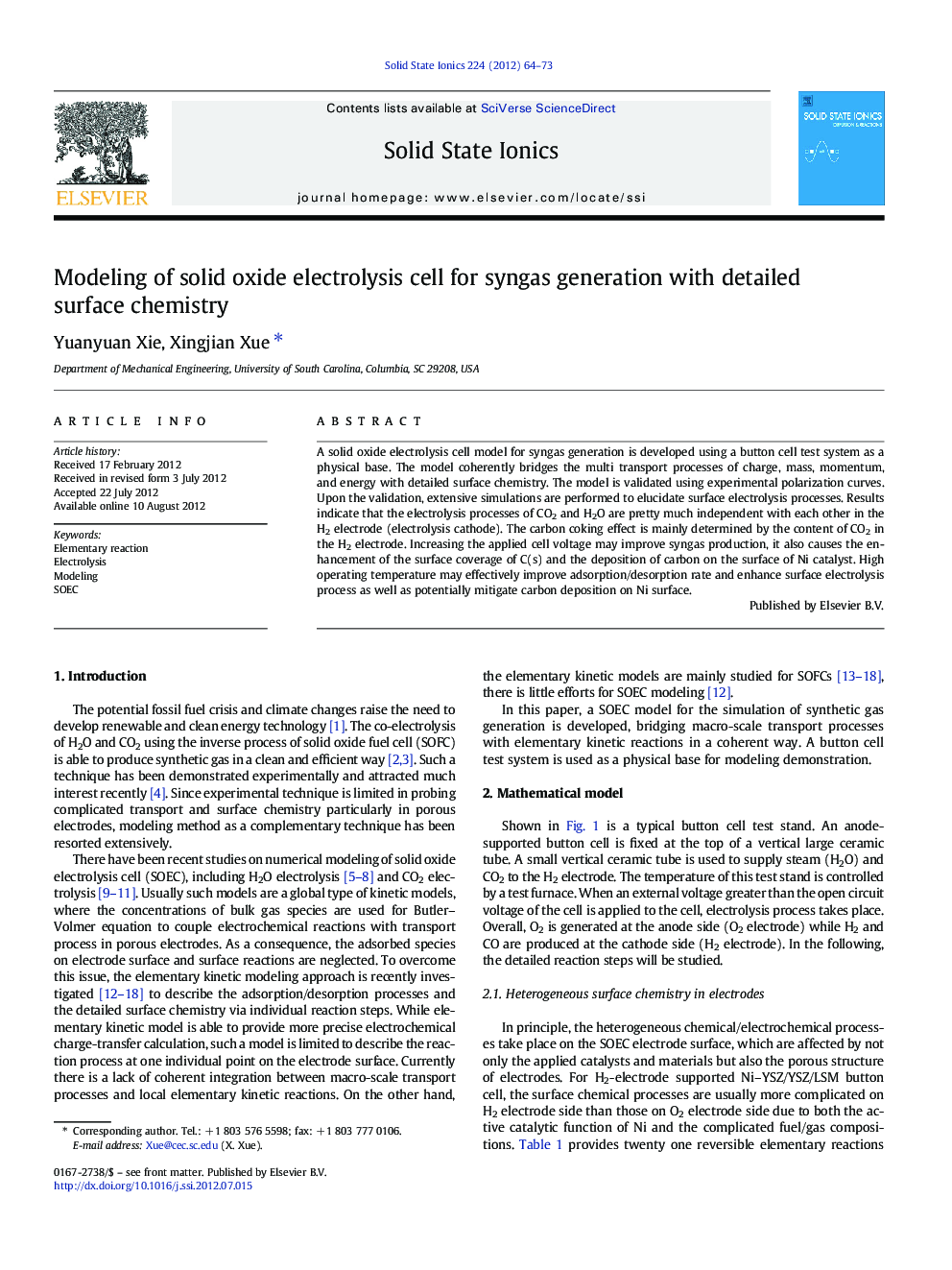| Article ID | Journal | Published Year | Pages | File Type |
|---|---|---|---|---|
| 1297002 | Solid State Ionics | 2012 | 10 Pages |
A solid oxide electrolysis cell model for syngas generation is developed using a button cell test system as a physical base. The model coherently bridges the multi transport processes of charge, mass, momentum, and energy with detailed surface chemistry. The model is validated using experimental polarization curves. Upon the validation, extensive simulations are performed to elucidate surface electrolysis processes. Results indicate that the electrolysis processes of CO2 and H2O are pretty much independent with each other in the H2 electrode (electrolysis cathode). The carbon coking effect is mainly determined by the content of CO2 in the H2 electrode. Increasing the applied cell voltage may improve syngas production, it also causes the enhancement of the surface coverage of C(s) and the deposition of carbon on the surface of Ni catalyst. High operating temperature may effectively improve adsorption/desorption rate and enhance surface electrolysis process as well as potentially mitigate carbon deposition on Ni surface.
► The model of solid oxide electrolysis cell for syngas generation is developed. ► The detailed surface chemistry is coherently integrated with macro-scale transport processes. ► Complicated electrochemical processes are elucidated with extensive simulations.
